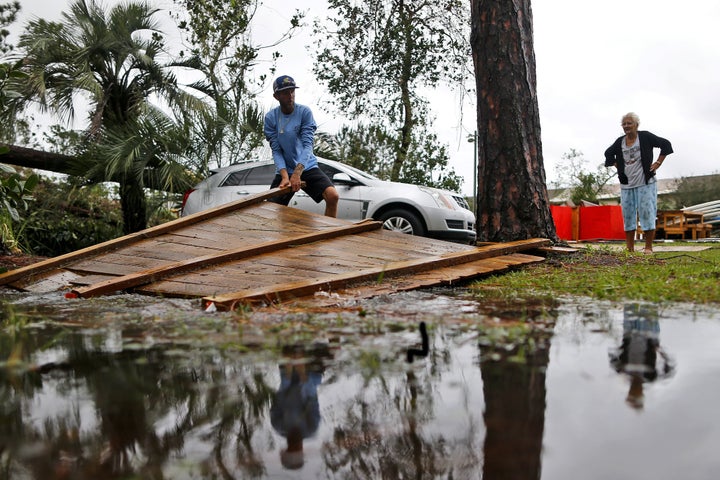One week after Pinaki Chakraborty moved to Okinawa, Japan, from the American Midwest, a giant typhoon formed over the Pacific and barreled right into the small island.
The October 2012 storm was unlike anything the physicist, who moved there to research fluid mechanics at the Okinawa Institute of Science and Technology, had ever seen. Winds bent palm trees into horizontal bows. The eye of the storm offered eerie, momentary reprieve ― even some sun. Then came another wall of wind and torrential trains to batter and soak the 463-square-mile sliver of land in the East China Sea between southern Japan and Taiwan.
“Where I live, the width of the island is about five miles, so it’s tiny,” Chakraborty said over a Zoom call last week. “I would track what is going on with the evolution of hurricanes and slowly get more and more interested in trying to understand a bit more of the physics.”
He understood storms like these were expected to grow more destructive as the climate changes, but he wanted to know why and how. What he found was sobering evidence that warming is making the intensity of storms last longer over land. His analysis of more than a half-century of data showed that 50 years ago, hurricanes were likely to weaken 75% within a day of landfall. Today, storms weaken only 50% over that same time period.

The peer-reviewed findings, published Wednesday in the journal Nature, indicate that the intense storms like those that have wreaked havoc across the U.S. Gulf Coast are a sign of things to come. The research also offers a damning rebuttal of the Trump administration’s oft-stated belief that hurricanes today are virtually unchanged from a century ago.
“It means the havoc will not be constrained to the coastal areas but will creep further inland, which of course then catches people unprepared for such big storms,” Chakraborty said.
Take, for example, Hurricane Michael. In 2018, the Category 5 storm swept slowly through the Southeast and destroyed the fields of “hardworking Georgia farmers, causing billions in economic damages,” said J. Marshall Shepherd, an atmospheric scientist at the University of Georgia.
“This study underscores something that we experienced recently in Georgia,” said Shepherd, who was not involved in the Nature study.
Chakraborty and his co-author, Lin Li, used publicly available data from the National Oceanic and Atmospheric Administration to pick out every storm from 1967 to 2018 that reached a minimum wind speed and lasted long enough on land to generate at least four inland data points. They then charted the decay in the storm’s intensity during the 24-hour period after it first made landfall.
A clear trend emerged. When the sea surface temperature was higher, it took longer for storms to lose intensity over land.
“If you have higher sea surface temperatures, you have more moisture in the hurricane, and the more the moisture, the slower the decay because moisture is fueling a slower decay.”
- Pinaki Chakraborty, Okinawa Institute of Science and Technology
But computer simulators Chakraborty later ran showed the key factor wasn’t surface temperature alone. It was the moisture. By artificially removing moisture from the simulated hurricanes, the models showed no difference between hurricanes that formed over warmer or cooler water. But in real life, warmer surface temperatures lead to increased moisture.
“That makes it very clear,” Chakraborty said. “If you have higher sea surface temperatures, you have more moisture in the hurricane, and the more the moisture, the slower the decay because moisture is fueling a slower decay.”
Other researchers agreed.
“I also found the modeling component of their study convincing to help drive home their physical argument,” said Phil Klotzbach, an atmospheric scientist at Colorado State University who was not involved in the study. “It’s always good to see more work being done on inland decay, as that area has tended to be a less-studied area compared with intensification.”
Though the study limited its scope to North Atlantic hurricanes due to the availability of data for that region specifically, the computer models offer applicable findings to cyclones in any part of the world.
“You can very, very cleanly see that if you have higher sea surface temperatures, you are going to have a slower decay,” Chakraborty said. “Is it going to be valid for any part of the world where the sea surface temperature is getting hotter? The answer is yes.”

